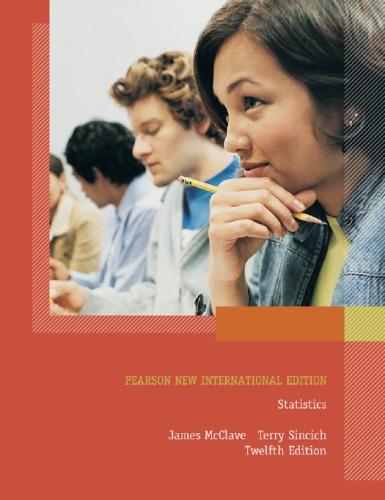76 Listening ability of infants. Science (Jan. 1, 1999) reported on the ability of seven-month-old infants to
Question:
76 Listening ability of infants. Science (Jan. 1, 1999) reported on the ability of seven-month-old infants to learn an unfamiliar language. In one experiment, 16 infants were trained in an artificial language. Then each infant was presented with two 3-word sentences that consisted entirely of new words (e.g., “wo fe wo”). One sentence was consistent (i.e., constructed from the same grammar the infants got in the training session), and one sentence was inconsistent (i.e., constructed from grammar in which the infant was not trained). The variable measured in each trial was the time (in seconds) the infant spent listening to the speaker, with the goal being to compare the mean listening times of consistent and inconsistent sentences.
a. The data were analyzed as a randomized block design with the 16 infants representing the blocks and the two types of sentences (consistent and inconsistent) representing the treatments. Do you agree with this data analysis method? Explain.
b. Refer to part a . The test statistic for testing treatments was F = 25.7 with an associated observed significance level of p 6 .001. Interpret this result.
c. Explain why the data could also be analyzed as a paired difference experiment with a test statistic of t = 5.07.
d. The mean listening times and standard deviations for the two treatments are given here. Use this information to calculate the F -statistic for comparing the treatment means in a completely randomized ANOVA design.
Explain why this test statistic provides weaker evidence of a difference between treatment means than the test in part b provides.

e. Explain why there is no need to control the experimentwise error rate in ranking the treatment means for this experiment.
Step by Step Answer:







